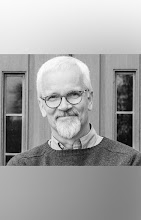 |
| Bond tour group at Luther & Katie's cloister home |
"The collection had as its nucleus a genuine thorn from the crown of Christ, certified to have pierced the Savior's brow. Frederick so built up the collection from this inherited treasure that the catalogue illustrated by Lucas Cranach in 1509 listed 5,005 particles, to which were attached indulgences calculated to reduce purgatory by 1,443 years. The collection included one tooth of St. Jerome, of St. Chrysostom four pieces, of St. Bernard six, and of St. Augustine four; of Our Lady four hairs, three pieces of her cloak, four from her girdle, and seven from the veil sprinkled with the blood of Christ. The relics of Christ included one piece from his swaddling clothes, thirteen from his crib, one wisp of straw, one piece of the gold brought by the Wise Men and three of the myrrh, one strand of Jesus' beard, one of the nails driven into his hands, one piece of bread eaten at the Last Supper, one piece of the stone on which Jesus stood to ascend into heaven, and one twig of Moses' burning bush. By 1520 the collection had mounted to 19,013 holy bones. Those who viewed these relics on the designated day and made the stipulated contributions might receive from the pope indulgences for the reduction of purgatory, either for themselves or others, to the extent of 1,902,202 years and 270 days. These were the treasures made available on the day of All Saints."
Luther
had taken a great risk posting his 95 Theses decrying indulgences the
day before. The duke was his patron, and though he appreciated the
popularity his university had gained by Luther's bold teaching and
preaching, this was too far. Luther was undaunted because he had
seen through the whole hoax of indulgences and a righteousness earned by
ones own imagined merit. “The church’s true treasure," he wrote, "is
the merits of Christ in the gospel.”
From
studying and teaching the Psalms, Galatians, Romans, and Hebrews,
Luther had come to know that Rome had flipped everything around and had,
thereby, done violence to the gospel, and that venerating the saints
and their supposed merits was a supplanting of the merits of Jesus
Christ. The realization was at first a personal one. “I must listen to
the gospel," he wrote. "It tells me not what I must do, but what Jesus
Christ the Son of God has done for me.”
Transformed
by the power of the gospel and the gift of faith, Luther had to tell
the Good News to others. And he did, as only Luther could do. “The most
damnable and pernicious heresy that has ever plagued the mind of men was
the idea that somehow he could make himself good enough to deserve to
live with an all holy God.”
Luther
knew that the dukes exhibition scheduled for All Saints' Day, November
1, 1517 must be confronted. It was an affront to the gospel of grace, a
supplanting of the authority of the Word of God, and an offense to true
Christian worship. “The highest worship of God is the preaching of the
Word, because thereby are praised and celebrated the name and the
benefits of Christ.”
Finally, for Luther the risks to his person were worth it. Why? It was worth it because the Son of God is the only Savior and true friend of sinners. Johann
Franck, German Lutheran pastor in the next generation expressed it this
way: "Jesus, priceless treasure, fount of purest pleasure, truest
friend to me."
Douglas Bond is author of many books,
including LUTHER IN LOVE (2017). He leads Church history tours,
including the Armistice 100 Tour, June 15-25, 2018, (Reformation tour of
France, teen Calvin in Paris, Calvin's birthplace in Noyon; including
teen atheist 2/Lt CS Lewis raging at God in the trenches of WW I,
Huguenots in Rouen and Amiens, and the failure of Modernism in WW I and
WW II). Space is limited so register (what better day to register than
All Saints' Day, the day after REFORMATION DAY!). You can purchase a signed copy of LUTHER IN LOVE and
his other books at bondbooks.net



























As Geneva is an attractive place with lovely and very sophisticated people who welcome their visitors from all over the world and mingle with them as they were never been a stranger. Events opens up a platform and make way for all the fresh talent that gets in together and the outcome is just out of the world where one can enjoy to the fullest.
ReplyDeleteConcert Geneve | Theatre Geneve | Grand Theatre Geneve | Theatre Du Leman | Spectacle Geneve | Agenda Geneve | Geneve Agenda | Geneva Events | Events In Geneva | Events Geneva | Evenement Geneve | Geneve Evenement | Evenement Geneve Aujourd'hui | Concerts In Geneva